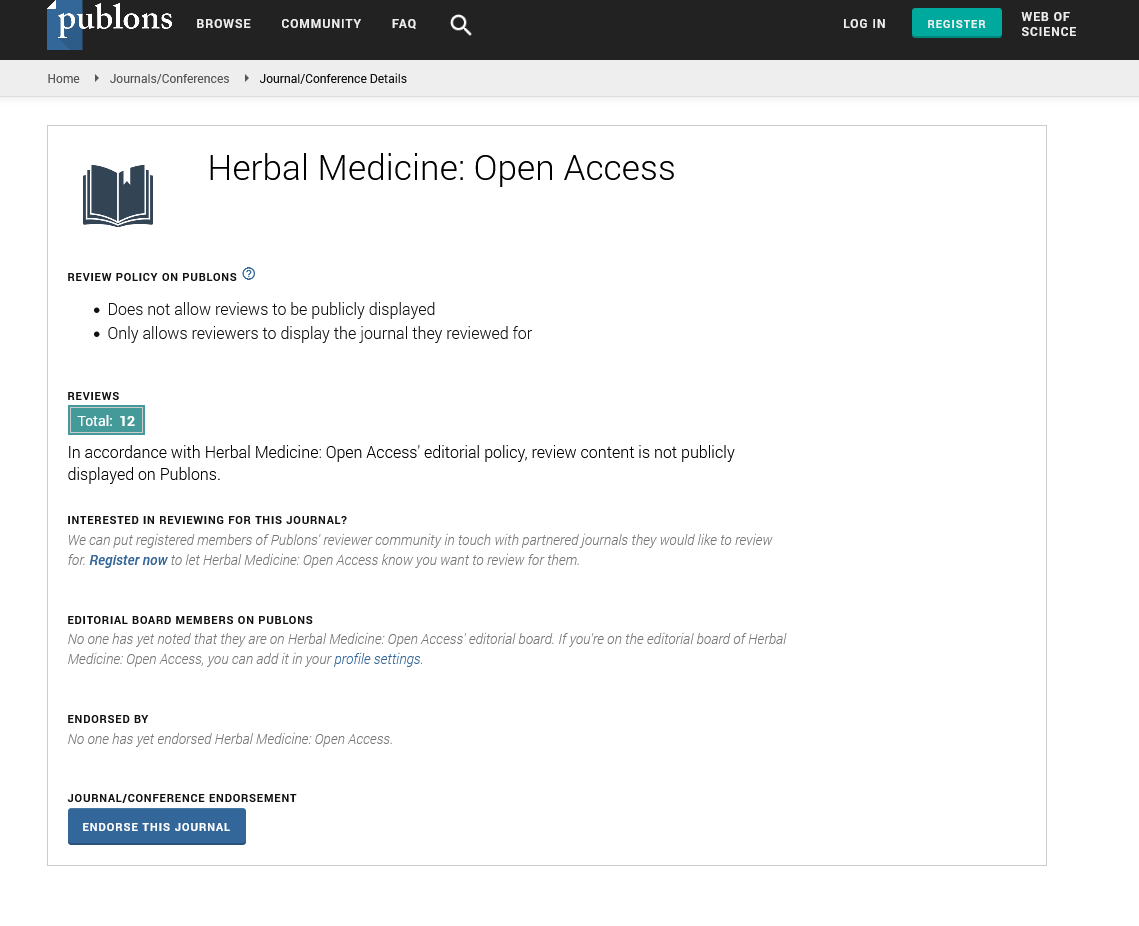Abstract
Phytochemical Screening and Anticonvulsant Activity of the Residual Aqueous Fraction of Tapinanthus globiferus Growing on Ficus glums
Tapinanthus globiferus (Loranthaceae) is a plant used in traditional medicine for the treatment of rheumatism, syphilis, fever and epilepsy. In this study, the acute toxicity study revealed an oral LD50 of ≥ 5000 mg/kg. The anticonvulsant activity of the residual aqueous fraction was investigated at doses of 250, 500, and 1000 mg/ kg using the Pentylenetetrazole (PTZ) induced seizure and maximal electroshock seizure models in mice and chicks. In the PTZ induced seizure the fraction offered 62.5% protection against seizure and prolonged the onset of seizure from 54.23 ± 6.12s to 290.86 ± 14.43s. The plant decreased the minimum recovery time (MRT) after hind limb tonic extension (HTLE) from 213.4 ± 19.12s to 136 ± 16.1s in the 500 mg/kg group.
The CNS depressant effect was also studied using the Diazepam induce sleep model. The fraction used dose dependently decreased the onset of diazepam induced sleep 160.03 ± 19.24.s to 28.00 ± 7.18.s, with a marked increase in duration of sleep 39.00 ± 12.53 min to 198.17 ± 27.28 min in the 1000 mg/kg treated group.
The data obtained from this study suggest that the residual aqueous portion of the dried whole plant of Tapinanthus globiferus may possess bioactive compounds with anticonvulsant effect.
Author(s):
Abubakar K, Adebisi IM, Ugwah-Oguejiofor JC, Idris GO, Idris B and Mshelia HE
Abstract | Full-Text | PDF
Share this

Google scholar citation report
Citations : 271
Herbal Medicine: Open Access received 271 citations as per google scholar report
Herbal Medicine: Open Access peer review process verified at publons
Abstracted/Indexed in
- Google Scholar
- JournalTOCs
- China National Knowledge Infrastructure (CNKI)
- Directory of Research Journal Indexing (DRJI)
- WorldCat
- Publons
- Secret Search Engine Labs
- Zenodo
Open Access Journals
- Aquaculture & Veterinary Science
- Chemistry & Chemical Sciences
- Clinical Sciences
- Engineering
- General Science
- Genetics & Molecular Biology
- Health Care & Nursing
- Immunology & Microbiology
- Materials Science
- Mathematics & Physics
- Medical Sciences
- Neurology & Psychiatry
- Oncology & Cancer Science
- Pharmaceutical Sciences


